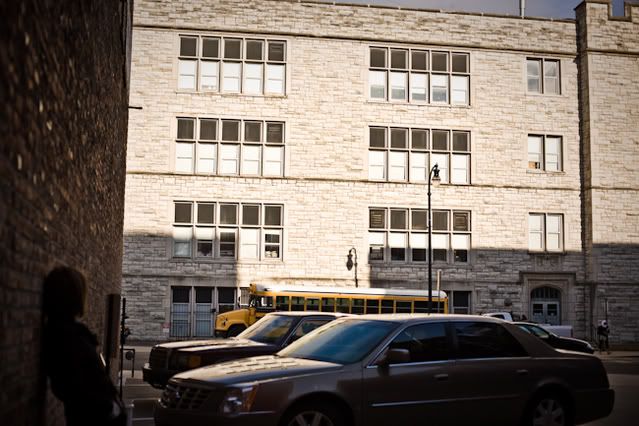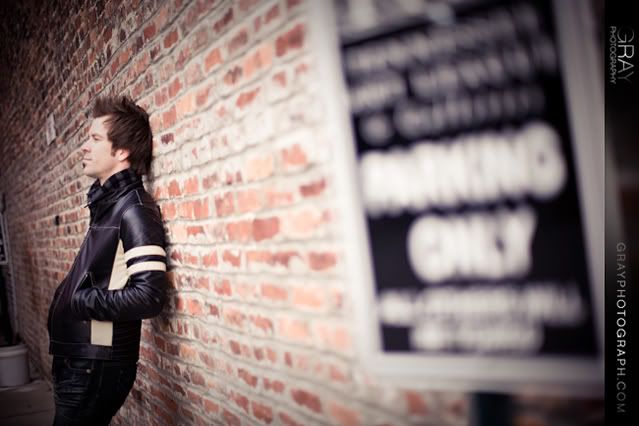Jody and I are gearing up for the 2009 season and this is always a fun time because... we get to by new gear!! :)
We purchased a few new lenses and are excited to share, and show, what one of them can do! We bought a brand new 50mm 1.4 lens (sounds techy, I know) which is a really great lens and serves a few purposes.
With the 50mm, part of its title means that it is fixed at a focal length of 50 millimeters - which basically means that when you look through the camera at something, it is a similar distance away from you, like something you would see with your naked eye. That gives you some perspective as well on lenses that are say, 200mm which would make things appear about 4 times closer to you than they really are, or a 16mm lens that would make things look about 3 times farther away than they really are.
The "1.4" part of the name of this lens means that you can let a lot of light into the camera because its "pupil" (if you will) can get very big like an owl's eye can. This is called the f/stop or the aperture. This is considered a "fast" lens in the photo-geek world because you can use it even in very low light situations and get a "faster" shutter speed in low light conditions. With a slower lens that does not let in a lot of light, you have to keep the shutter open for a while to let enough light in which means you get blurry photos (which is why these lenses are called "slow" lenses) . The math behind the "f/1.4" part is this:
In optics, the f-number (sometimes called focal ratio, f-ratio, or relative aperture) of an optical system expresses the diameter of the entrance pupil in terms of the focal length of the lens; in simpler terms, the f-number is the focal length divided by the "effective" aperture diameter. It is a dimensionless number that is a quantitative measure of lens speed, an important concept in photography. (Wikipedia)
To make that ever more simple - if you look at how long the barrel of the lens is (or the focal length), then divide that by how big the inside of that lens can get (the part that opens to let the light in), this will determine how "fast" the lens is. So this lens, being able to reach f/1.4, is really close to opening almost as big as the diameter of the lens barrel. So it can practically see in the dark!! Very cool!! So for all those exit shots at night, and all those dark reception halls... this lens makes those shots even easier!!
The other neat thing about this lens is this. The more wide open you shoot a fast lens, the more "shallow" the depth of focus. Which means:
In optics, particularly as it relates to film and photography, the depth of field (DOF) is the portion of a scene that appears sharp in the image. Although a lens can precisely focus at only one distance, the decrease in sharpness is gradual on either side of the focused distance, so that within the DOF, the unsharpness is imperceptible under normal viewing conditions.
Soooo, if you took a picture with the lens opening really wide (at 1.4 - by the way, you can shoot it really wide open like that, or close it WAY down to let in just a tiny bit of light) there will only be a tiny width of the photo that is in focus. If you shoot it at say, f/22 (which make the opening very small and lets hardly any light in) you can make an entire mountain look like it is in focus. Why the lens does that is a whole other story! But if you shoot it really fast at f/1.4, you can have nothing in focus except for your eye ball or a few strands of hair, which makes for some really cool looking portraits in almost any place you happen to be shooting.
We shot these photos of ourselves to test out the new lens outside in our studio parking lot in downtown Nashville a few days ago. This was the rather ugly looking location of our small photo shoot (with my beautiful babe-alicious wife Jody standing against the wall on the bottom left).

So, by shooting with hardly anything in focus at f/1.4 (if you do not know what that means, you should have read the whole post!) you can get these kind of photos in that ugly location!




Notice that nothing is in focus except for us. This means that almost anything could be in the background, and not distract from the focus point of the photo, which is us!
So, we hope this was informative for those of you die-hards who actually read the post and did not just skip down to the cool shots! For the rest of you, to shame... :)












They look great!
ReplyDeletemmmm... bokeh. :) glad you're loving your new toys!
ReplyDeletei just bought a 100 2.8 macro, can't wait to get some detail shots!
ReplyDeleteI like this post!
ReplyDeletehey guys, i just now saw your post on our blog about the new site, THANKS! we're loving all of your new stuff too! btw, we adore our 50mm also! keep up the great work :)
ReplyDeletephil & mindy
I first skipped all those words and went straight to the photos, then I went back up to the top and read EVERYTHING. Do I get a cookie now?
ReplyDelete